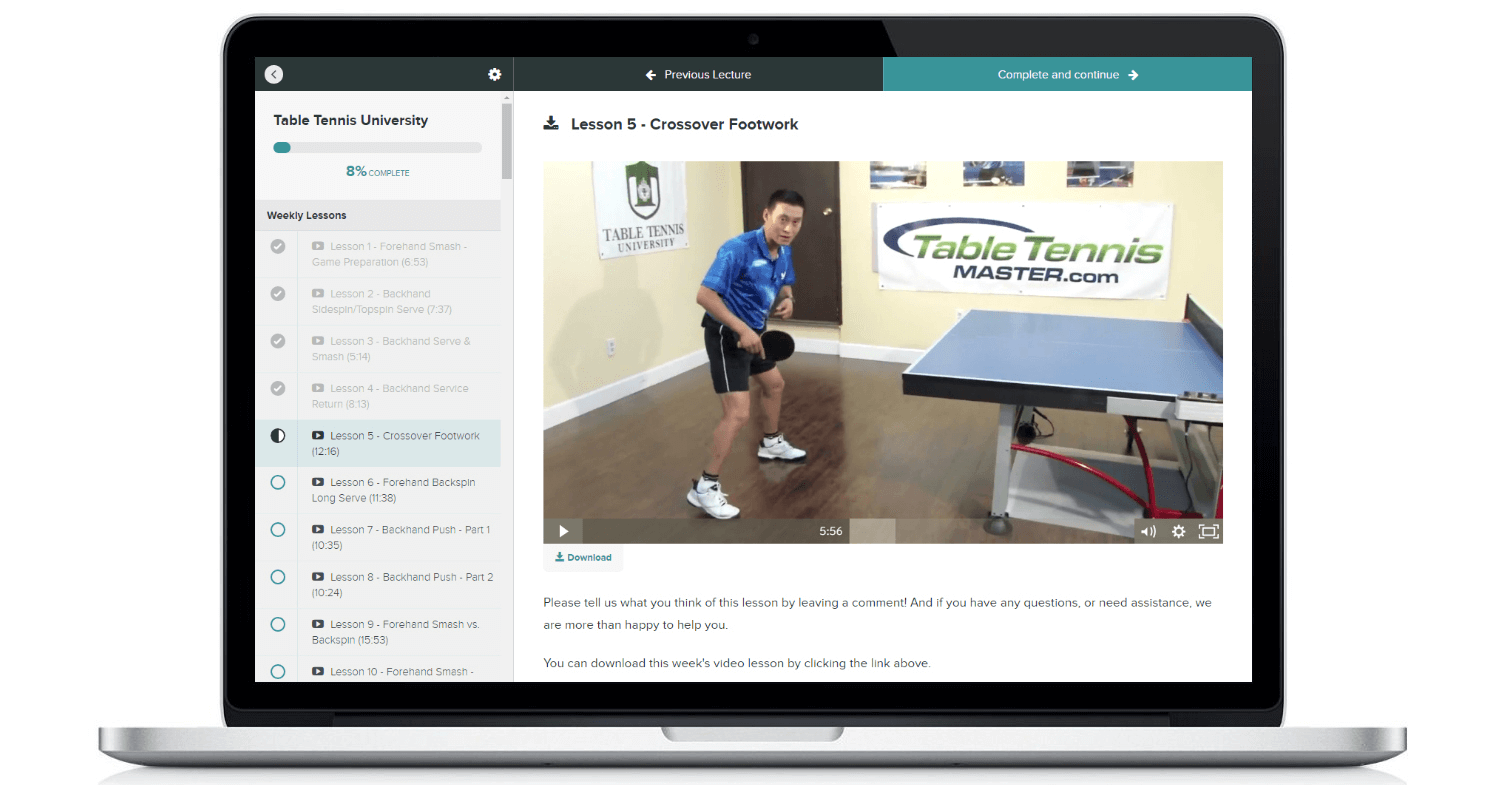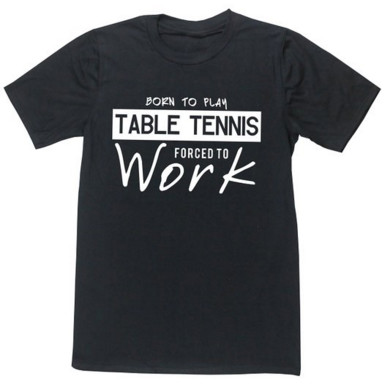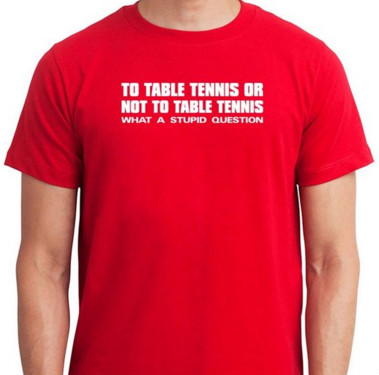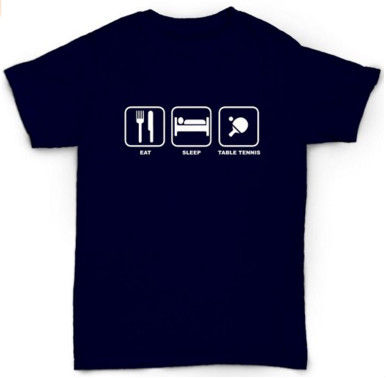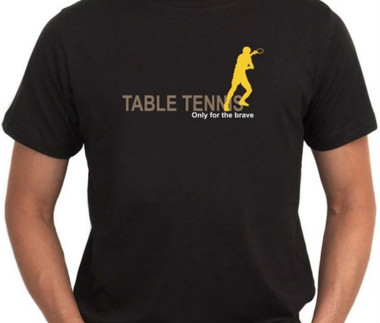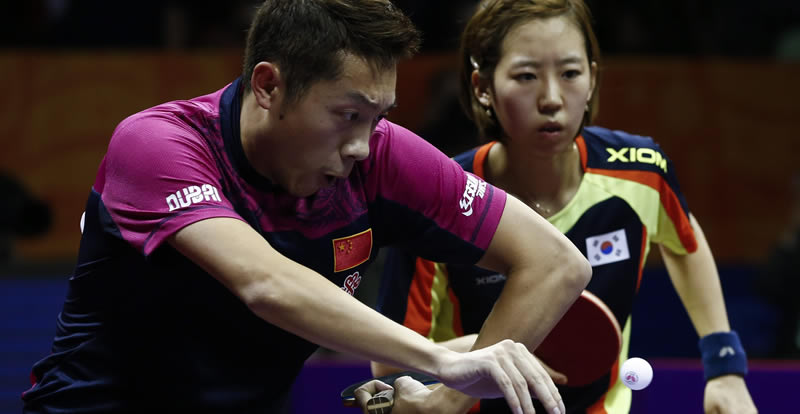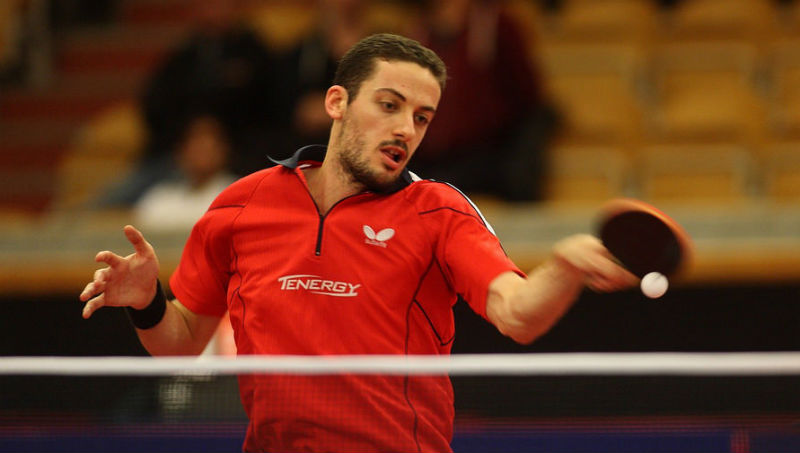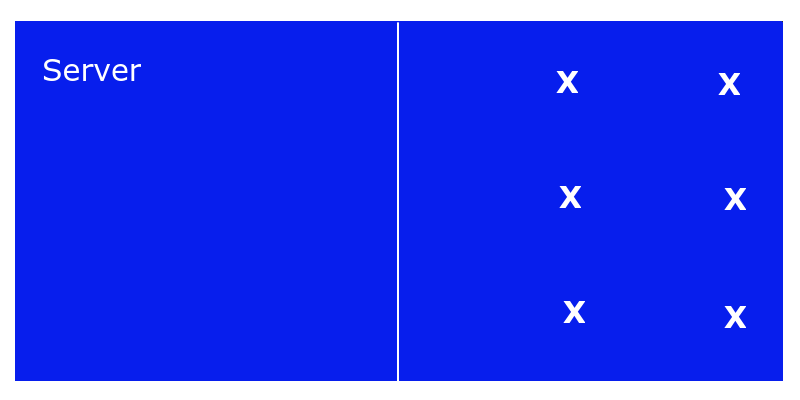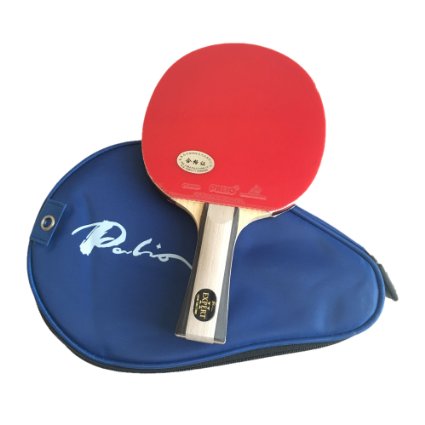Table tennis players can spend silly amounts of money on table tennis equipment. I play with Butterfly Tenergy rubbers, which aren’t cheap. When I buy new rubbers, it will cost the best part of £100.
Ouch.
Hello overdraft, nice to see you again!
Since I spend more money than I should on table tennis rubbers, I really try to look after them. I want them to last as long as possible and retain their grippiness, so I can get lots of spin on my shots.
Taking care of my table tennis bat doesn’t take much effort or cost much money. Here’s what I do (and you should do too).
Clean with water
Table tennis rubbers collect dust, powder from balls, sweat, hair, anything! When you get too much dust and grime on your rubbers, they become less grippy. The ball will start to slip off the rubbers and you will find it harder to consistently generate heavy spin.
You need to get all this stuff off your rubbers.
The cheapest way to keep your bat clean is to use a little bit of water and some kitchen paper or a cloth and wipe the surface clean. This only takes a minute and the rubber will dry very quickly.
Don’t use too much water, as you will end up soaking the rubbers and even the blade, which is not a good idea.
Just a little water and a quick wipe and you will remove most of the dust and grime from your rubbers.
You should do this after every time you play.
Clean with spray and sponge
A little water will get rid of most grime on your rubbers, but not everything.
Once a week or before a league match or tournament, I will give my rubbers a deeper clean with a biological spray and a sponge. This will clear the dust, but also clear the sweat and oils which water doesn’t always get to.
I don’t use a biological spray all the time, as I’m concerned about the chemicals in the spray making the rubbers deteriorate quicker. But a spray once a week is fine.
A bottle of biological spray doesn’t cost very much (£5-£10) and will last for ages. I’ve had my current spray for about two years and it hasn’t run out yet.
Here’s what I use:
- Butterfly table tennis rubber cleaner (Buy in UK | Buy in USA)
- Butterfly cotton sponge (Buy in UK | Buy in USA)
Another good choice:
- Joola Turbo Cleaner (Buy in UK | Buy in USA)
Buy a bat case
I’m sure you have one already, but if you don’t, make sure you buy a bat case.
The main purpose of a bat case is to keep your rubbers dust-free and provide protection when you’re not playing.
Table tennis rubbers are very easy to scratch, so if you don’t keep your bat covered and protected, your rubbers will be at greater risk of damage.
It doesn’t really matter what type of bat case you have. You can buy a case for a single bat for £5-£10 and these are fine. I use a larger bat case, which can fit three bats, as I need to carry spares when I’m coaching.
If you’re really concerned about keeping your bat safe, you can buy an aluminum case. No harm will come to your bat in one of these bat cases!
Here’s some popular bat cases you can buy on Amazon:
UK
- Joola Pocket Table Tennis Bat Cover
- Custom Table Tennis Black Elite Double Bat Wallet
- Joola Table Tennis Case Aluminium
USA
- STIGA Table Tennis Racket Cover
- Socko Table Tennis Bag
- Killerspin Barracuda Table Tennis Paddle Case
You can also buy bat cases from any good table tennis retailer. Take a look at my list of table tennis retailers in UK, Europe, USA, Asia and Australia to find a retailer near you.
Optional extra: rubber protector
Another option is to buy rubber protectors. These are thin, transparent films, which you can cut to the shape of your rubbers.
After playing, some players will clean their rubbers and then cover with protectors. This ensures nothing will get onto the rubber surface.
I don’t use these, as I think a bat case does pretty much the same thing, but I know plenty of players do.
Recommendation:
- Butterfly rubber film (Buy in UK)
Clean rubbers = better performance
All table tennis rubbers deteriorate over time and will eventually need to be replaced. But you can make your rubbers last longer (and stay grippier for longer) by looking after them.
When I first started playing table tennis I didn’t bother to clean my rubbers. I didn’t know I was supposed to! My rubbers collected lots of dust, dirt, sweat and grime and I just carried on playing (badly).
One day a more experienced player took a look at my rubbers and gave me a good telling off. My rubbers were a disgrace! He cleaned them for me and I started hitting a few balls. The difference was incredible. It seemed so much easier to spin the ball.
I learned my lesson and from then on, I have always kept my rubbers clean.
It really doesn’t cost much to look after bat, so there is no excuse. Keep your rubbers clean!
The post How to look after your table tennis bat appeared first on Tom Lodziak Table Tennis Coaching.
